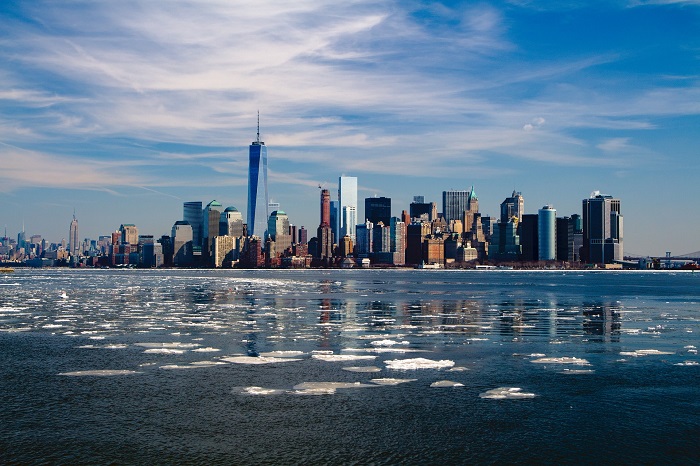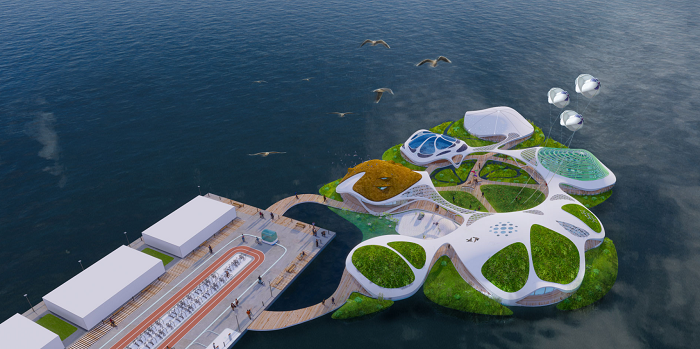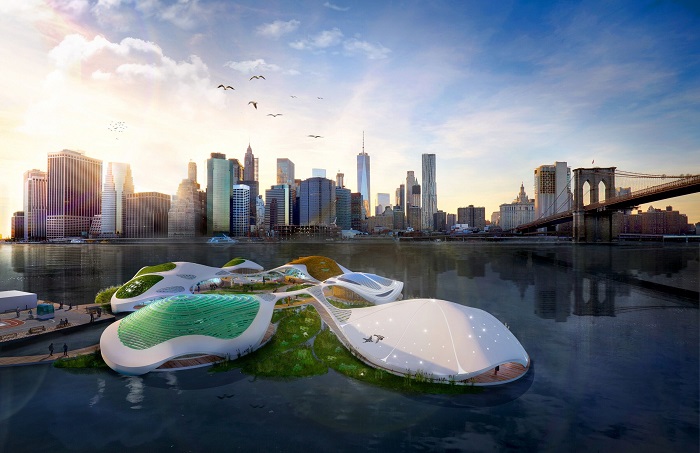ISABEL RUBIO ARROYO | Tungsteno
The housing shortage in Manhattan is being exacerbated by the devastating effects of climate change. Sea levels have risen between 21 and 24 centimetres since 1880, according to the US National Oceanic and Atmospheric Administration (NOAA), and the situation looks set to get worse. Among the most ambitious proposals for countering these threats are those that propose expanding the island into the harbour. We analyse the feasibility of two major projects that aim to tackle challenges such as overpopulation and global warming.
A seven million square metre artificial island
The New Mannahatta project, conceived by economist Jason M. Barr, consists of adding seven km² of land to New York to redevelop the south coast of the island. The name Manhattan derives from Mannahatta, the name used by the Lenape tribe and which can be translated as "the little island". "New York was once a city of big projects like the Brooklyn Bridge, the subway system and the 92-acre Battery Park City," says Barr, who is also the author of the book Building the Skyline: The Birth and Growth of Manhattan's Skyscrapers.
For the city to thrive, he says, "big thinking is necessary." In theory, the new lands of the New Mannahatta project could accommodate 180,000 new homes for some 250,000 inhabitants. Thus the project could help alleviate the housing crisis that is plaguing New York. Between 2010 and 2018, 171,000 units of housing were built, enough to accommodate some 417,000 people, according to The New York Times. However, in the same period, the city's population grew by nearly 500,000.
The new land could be built on higher ground to provide protection from flooding, because beyond sea level rise, global warming will cause other extreme events. In fact, in many coastal areas of the US, flooding from high tides is between 300% and 900% more frequent than it was 50 years ago, according to NOAA. The economist also suggests creating wetlands around coasts to absorb storm surges. Research published in Nature indicates that wetlands can prevent millions of dollars in flood losses.

Sea levels have risen by 21 to 24 centimetres since 1880, according to the US National Oceanic and Atmospheric Administration. Credit: Pexels.
While the New Mannahatta project seems on the surface to be an ideal solution to flooding and homelessness, it also has its detractors. The proposal "tries to pass itself off as a great idea of the future. But as many have pointed out, it has much more in common with the various misguided plans to pave over the Hudson and the East River," notes urban design and real estate website Curbed. Those most critical of the project question the lack of details for the plan to go ahead. For example, while Barr suggests building the site at a higher elevation, he offers no topographical details. The economist also mentions that "one of the benefits of creating this new neighbourhood is that it can pay for itself through sales or long-term land leases." But he offers no concrete details to show that New Mannahatta would be a viable project.
A 100% self-sufficient floating campus
There are other initiatives experimenting with the idea of building on water in Manhattan. The New York-based organisation #WeThePlanet would like to build an artificial floating island on which to host international summits, workshops and educational programmes. This structure, designed by the German architectural firm 3deluxe, would be mobile and unaffected by sea levels.
The aim would be for the island to be completely self-sufficient in the generation of energy and drinking water. This would involve state-of-the-art technologies for air cleansing, along with wind farms, photovoltaics and marine power plants located under the floating platform. To build the campus, the plan is to use natural materials such as wood, clay, reeds and recycled materials such as bioplastics.
"After the shock of the pandemic and the social polarisation of recent years, there is a longing for positive change. It is time for architecture and urbanism to take a more ambitious approach to humanise our living environment," explains Dieter Brell, creative director of 3deluxe. But, as with the New Mannahatta project, many details of this initiative are still unknown at the moment: from whether it is only an experimental prototype or will actually be realised, to the real cost of the project or whether the relevant permits have been applied for to build this floating island.

This floating prototype designed by German architectural firm 3deluxe would be self-sufficient in power generation and drinking water. Credit: 3deluxe.
We'll have to wait and see if this kind of project will come to fruition and become part of the solution to Manhattan's housing shortage and the effects of climate change. Other coastal cities around the world have already begun to invest in floating architecture. While Copenhagen is constructing a floating park made up of a series of small islands, Qatar is working on luxury hotels that slowly spin in the water to generate electricity. Given that the oceans occupy most of the planet's surface, making them habitable has become one of the major challenges of the century.
· — —
Tungsteno is a journalism laboratory to scan the essence of innovation. Devised by Materia Publicaciones Científicas for Sacyr’s blog.
